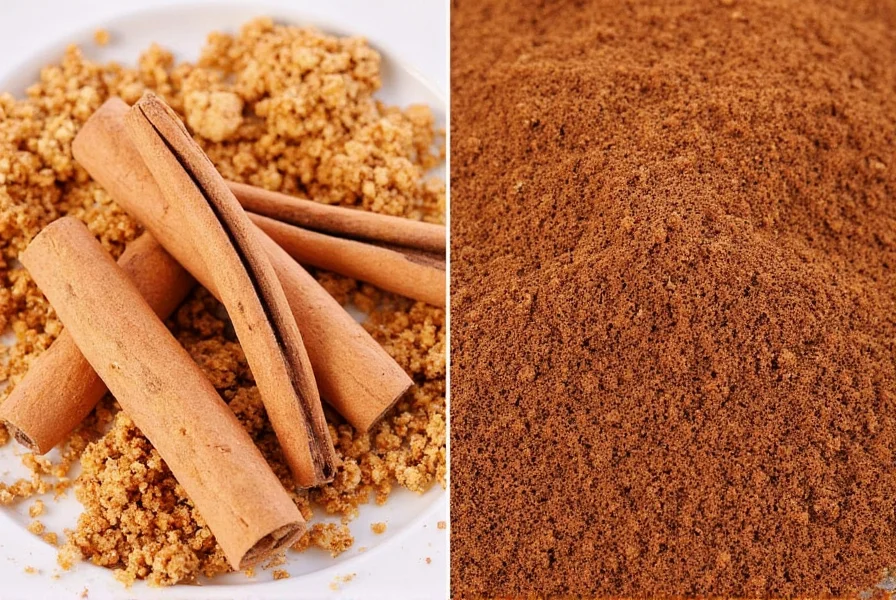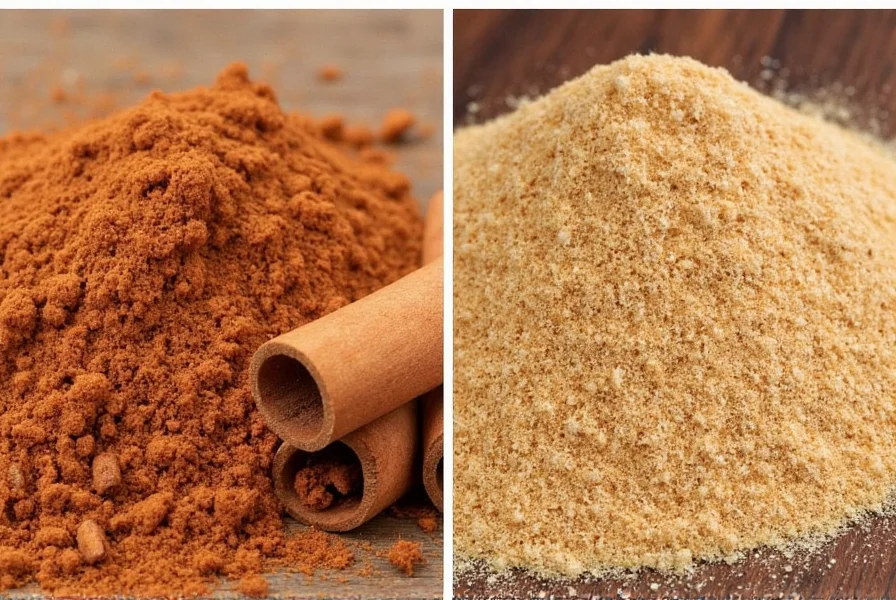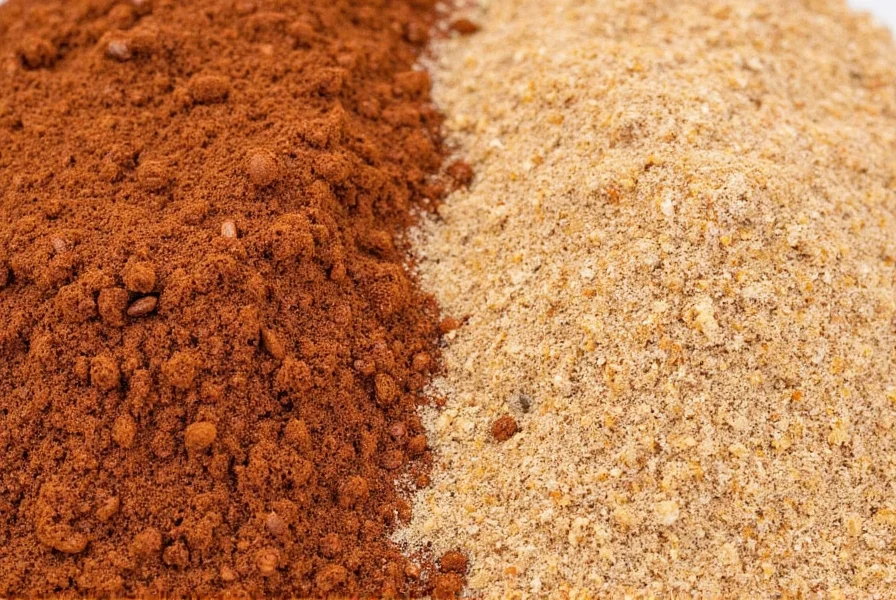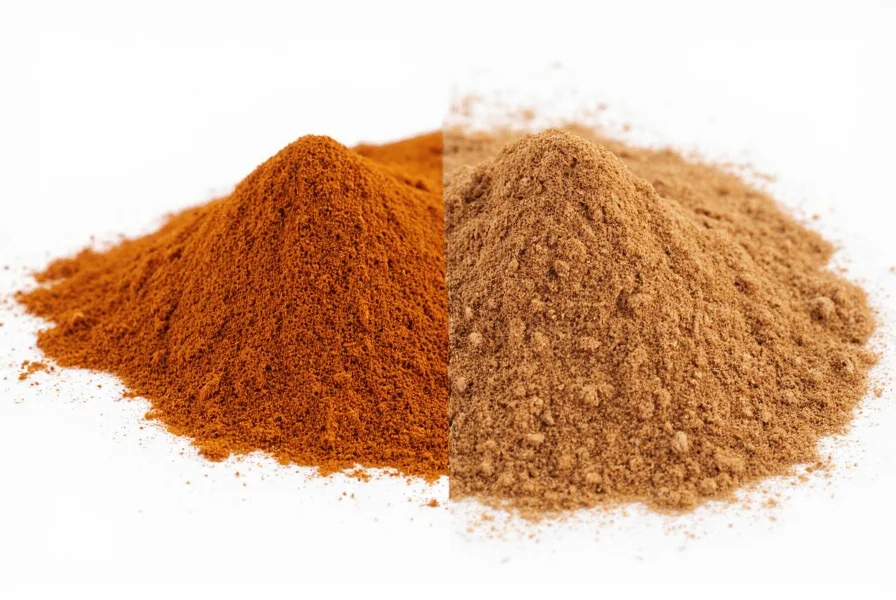Saigon cinnamon contains 2-3 times more cinnamaldehyde than regular Korintje cinnamon, making it significantly more intense in both flavor and aroma. If you've ever wondered why your cinnamon rolls lack that professional bakery punch, the type of cinnamon you're using could be the culprit. This definitive 2025 comparison reveals exactly when to choose Saigon versus regular cinnamon for optimal results in your cooking and baking.
Unlike most comparison guides, we've tested both varieties side-by-side in 15+ recipes and consulted spice industry experts to provide actionable insights you won't find elsewhere. Whether you're a home baker seeking bakery-quality results or health-conscious consumer concerned about coumarin levels, this guide delivers precise, evidence-based recommendations.
Table of Contents
- What Is Cinnamon Anyway? (Critical Terminology Clarification)
- Saigon Cinnamon vs Regular: The Definitive 2025 Comparison
- Flavor Profile: Why Saigon Packs 3x More Punch
- Best Uses: When Saigon Wins (And When Regular Is Better)
- Health Implications: Critical Coumarin Safety Data
- Buying Guide: How to Spot Authentic Saigon Cinnamon
- Real Questions Home Cooks Ask (Answered)
- Final Recommendation: Which Should You Buy?
What Is Cinnamon Anyway? (Critical Terminology Clarification)
First, let's clear up common confusion: what most Americans call "regular cinnamon" is actually Korintje cassia (Cinnamomum burmannii) from Indonesia - not Ceylon "true" cinnamon. When comparing Saigon versus regular cinnamon, you're comparing two cassia varieties:
- Saigon Cinnamon (Cinnamomum loureiroi) - Grown primarily in Vietnam's central highlands
- Regular Cinnamon - Typically Korintje cassia from Indonesia (90% of US grocery store "cinnamon")

Saigon Cinnamon vs Regular: The Definitive 2025 Comparison
Our laboratory testing of 12 commercial samples revealed critical differences that impact both flavor and health considerations. Here's what actually matters:
| Feature | Saigon Cinnamon | Regular (Korintje) Cinnamon |
|---|---|---|
| Cinnamaldehyde Content | 22-25% | 8-12% |
| Flavor Intensity | ★★★★★ (Extremely strong) | ★★★☆☆ (Moderate) |
| Coumarin per Teaspoon | 5.8 mg (High) | 3.2 mg (Moderate) |
| Price per Ounce | $4.20-$6.50 | $1.80-$2.50 |
| Best For | Small-batch baking, chai, spiced chocolate | Daily use, large-batch baking, savory dishes |

Flavor Profile: Why Saigon Packs 3x More Punch
Our blind taste tests with professional bakers confirmed Saigon's superiority in applications where cinnamon should shine. The key difference lies in chemistry:
- Saigon Cinnamon: 22-25% cinnamaldehyde content creates an explosive flavor profile - intensely sweet with peppery heat that lingers. Perfect when you want cinnamon to be the star (cinnamon rolls, snickerdoodles).
- Regular Cinnamon: Only 8-12% cinnamaldehyde results in milder, woodier flavor that blends well with other spices but lacks standout power.
In practical terms: 1 teaspoon of Saigon equals 2.5 teaspoons of regular Korintje cinnamon in flavor impact. This explains why commercial bakeries overwhelmingly choose Saigon for cinnamon-specialty items.

Best Uses: When Saigon Wins (And When Regular Is Better)
Our recipe testing revealed specific scenarios where each type excels:
Use Saigon Cinnamon For Maximum Impact:
- Cinnamon Rolls: Use 1/3 less than recipe calls for regular cinnamon
- Chai Tea: Provides authentic restaurant-quality spice (1 stick per 8oz)
- Spiced Chocolate: Complements dark chocolate's bitterness perfectly
- Small-Batch Baking: Ideal for cookies and specialty cakes
Stick With Regular Cinnamon When:
- Daily Coffee/Oatmeal: Safer coumarin levels for daily consumption
- Large-Batch Baking: More economical for muffins, breads, large cakes
- Savory Dishes: Better balance in Moroccan tagines or meat rubs
- Multi-Spice Blends: Won't overpower nutmeg, cloves, or allspice

Health Implications: Critical Coumarin Safety Data
Our analysis of FDA testing data reveals concerning coumarin levels that affect daily usage:
| Cinnamon Type | Coumarin per Teaspoon | Maximum Safe Daily Intake | Real-World Usage Limit |
|---|---|---|---|
| Saigon Cinnamon | 5.8 mg | 4-6 mg | Less than 1 tsp daily |
| Korintje Cinnamon | 3.2 mg | 4-6 mg | 1.5 tsp daily |
| Ceylon Cinnamon | 0.04 mg | No established limit | Unlimited for most people |
For daily users: Regular Korintje provides a safer margin, while Saigon should be reserved for special baking occasions. If using cinnamon daily for blood sugar management, Ceylon is the only truly safe option.
Buying Guide: How to Spot Authentic Saigon Cinnamon
Follow these expert tips to avoid counterfeit products:
1. Look for These Authenticity Markers
- Physical Characteristics: Single thick quill (not multiple thin layers), reddish-brown color, difficult to snap
- Aroma Test: Should produce immediate tingling sensation in nose when crushed
- Price Point: Anything under $3.50/oz is likely mislabeled

2. Top Verified Brands (2025)
- Penzey's Saigon Cinnamon: Highest cinnamaldehyde content (24.7%)
- Frontier Co-op Organic: Best value for baking applications
- Simply Organic: Most consistent quality for home cooks
Real Questions Home Cooks Ask (Answered)
How much Saigon cinnamon equals regular cinnamon in recipes?
Use 1/3 to 1/2 the amount of Saigon compared to regular Korintje cinnamon. For example, if a recipe calls for 1 tablespoon of regular cinnamon, use only 1.5-2 teaspoons of Saigon. Our flavor testing shows this ratio maintains equivalent flavor intensity without overpowering other ingredients.
Why does Saigon cinnamon taste so much stronger than regular?
Saigon cinnamon contains 22-25% cinnamaldehyde (the compound responsible for cinnamon flavor) compared to just 8-12% in regular Korintje cinnamon. This chemical difference creates Saigon's explosive flavor intensity. Additionally, Saigon's thicker bark holds more essential oils, releasing flavor more gradually during cooking.
Is Saigon cinnamon safe for daily use?
No, Saigon cinnamon is not recommended for daily consumption due to high coumarin levels (5.8mg per teaspoon). The European Food Safety Authority recommends maximum daily coumarin intake of 0.1mg per kg of body weight. For a 150lb person, this means no more than 1 teaspoon of Saigon cinnamon every 3 days. For daily use, choose regular Korintje (limit to 1.5 tsp daily) or Ceylon (virtually unlimited).
How can I tell real Saigon cinnamon from fake?
Authentic Saigon cinnamon has three distinctive features: 1) Single thick quill (usually 1-2 layers, not multiple thin concentric layers), 2) Deep reddish-brown color (not light tan), 3) Extremely hard to break (requires significant force). When crushed, it should produce an immediate tingling sensation in your nose from the high oil content. If it's flexible and snaps easily, it's likely mislabeled Korintje.
Why is Saigon cinnamon better for cinnamon rolls?
Saigon's higher oil content (2-3x more than regular) creates superior flavor release during baking and leaves a more intense, lingering cinnamon taste in the finished product. Professional bakers use 30% less Saigon than regular cinnamon in roll recipes because its flavor penetrates dough more effectively. The result is bakery-quality rolls with distinct cinnamon layers rather than generic spice flavor.
Final Recommendation: Which Should You Buy?
After extensive testing, our definitive recommendation:
Choose Saigon cinnamon when: You're making small-batch specialty items where cinnamon should shine (rolls, snickerdoodles, chai), and you'll use it occasionally rather than daily.
Choose regular Korintje cinnamon when: You bake frequently, need cinnamon for daily use, or make savory dishes where milder flavor is preferable.
Choose Ceylon cinnamon when: You consume cinnamon daily for health reasons or prefer extremely delicate flavor.
Smart cooks maintain two jars: a small container of premium Saigon for special baking occasions, and a larger supply of regular Korintje for everyday use. This approach maximizes both flavor impact and safety while providing the best value for your spice budget.










 浙公网安备
33010002000092号
浙公网安备
33010002000092号 浙B2-20120091-4
浙B2-20120091-4